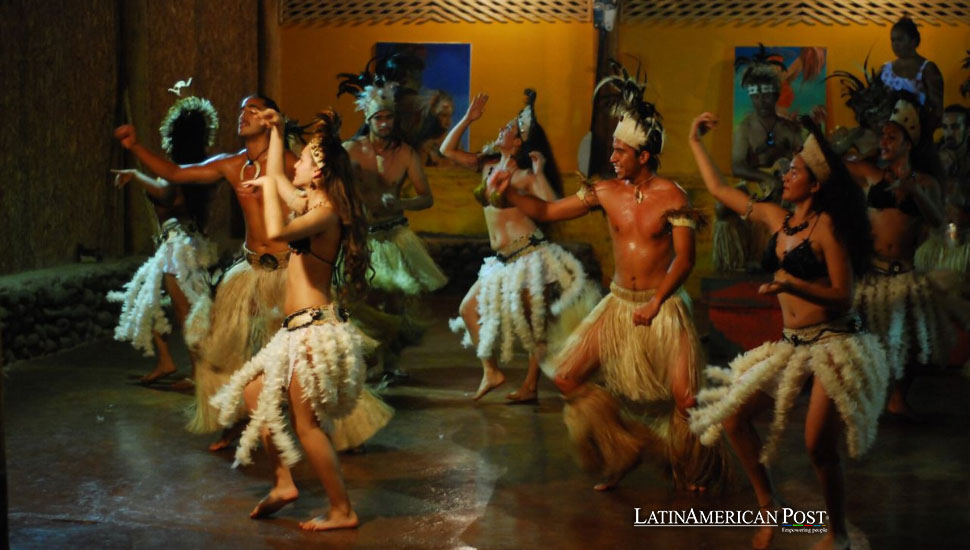Chile’s Rapanui Likely Beat Columbus and the Vikings to the Americas

Groundbreaking genetic and radiocarbon research reveals that the Rapanui people of Easter Island, now part of Chile, made contact with the Americas centuries before Christopher Columbus or the Vikings. This discovery rewrites the story of early trans-oceanic exploration.
A New Chapter in History
For centuries, the question of who first made contact with the Americas has sparked intense debate. While most school textbooks credit Christopher Columbus with discovering the New World in 1492, other theories suggest that the Vikings, led by Leif Erikson, may have reached North America centuries earlier. Recent archaeological evidence at a Viking settlement in Newfoundland, known as L’Anse aux Meadows, supports the idea that Norse explorers ventured across the Atlantic around 1000 CE, predating Columbus by nearly 500 years.
However, new research combining genetic and radiocarbon dating technologies has added a surprising twist to the story. A study published in Nature has revealed that the Rapanui people, the original inhabitants of Easter Island, may have made contact with Native Americans between 1250 and 1430 CE—potentially earlier than either Columbus or the Vikings. This discovery challenges long-held beliefs about trans-oceanic exploration. It highlights the extraordinary navigational abilities of the Polynesian Rapanui, who lived on one of the most isolated islands in the world.
Easter Island, or Rapa Nui, is located over 2,200 miles west of Chile in the southeastern Pacific Ocean. Despite its remoteness, the island’s indigenous Rapanui people are now believed to have ventured far beyond their island, possibly reaching the coasts of South America centuries before European explorers set sail. This new evidence places the Rapanui as one of the earliest peoples to make trans-Pacific contact with the Americas, reshaping our understanding of early exploration.
Genetic and Radiocarbon Evidence
The discovery that the Rapanui people made contact with the Americas centuries before Columbus is based on cutting-edge genetic and radiocarbon research. Scientists analyzed the DNA of 15 ancient Rapanui individuals who lived on Easter Island between 1670 and 1950, and the results were astonishing. The genetic analysis revealed that the Rapanui carry approximately 10% Native American ancestry, a sign that their ancestors interacted with indigenous populations in the Americas.
Using radiocarbon dating, researchers could pinpoint the contact period between the Rapanui and Native Americans between 1250 and 1430 CE. This timeline significantly predates Columbus’s arrival in the Americas in 1492 and challenges previous theories that Europeans were the first to establish connections with the New World.
The implications of this genetic evidence are profound. It suggests that the Rapanui, part of the broader Polynesian seafaring culture, managed to cross the vast expanse of the Pacific Ocean and reach the South American continent long before Columbus or even the Vikings. This discovery not only underscores the incredible navigational skills of the Polynesians but also forces historians to reconsider the narrative of pre-Columbian contact with the Americas.
The Viking Connection
While Columbus has traditionally been credited with discovering the Americas, alternative theories about Viking contact have long persisted. According to Norse sagas and archaeological evidence, Viking explorer Leif Erikson is believed to have sailed west from Greenland to the shores of Canada around 1000 CE. The settlement at L’Anse aux Meadows, discovered in the 1960s, provides clear evidence of Viking presence in North America, leading many historians to assert that the Vikings were the first Europeans to reach the continent.
However, despite the evidence of Norse exploration, Viking contact with the Americas appears to have been short-lived. The settlement at L’Anse aux Meadows was abandoned after only a few years, and there is little evidence to suggest that the Vikings established lasting interactions with Native American populations. The absence of sustained contact has led some scholars to downplay the significance of Viking exploration in favor of the later expeditions by Columbus and other Europeans.
The recent genetic discoveries regarding the Rapanui, however, suggest that while the Vikings may have briefly reached North America, the Polynesians made more meaningful and lasting connections with the indigenous peoples of the Americas. The presence of Native American DNA in the Rapanui genome shows that these interactions involved not just brief encounters but the exchange of genetic material, likely through trade or intermarriage.
This revelation shifts the focus away from European explorers and highlights the accomplishments of the Polynesians, who navigated vast distances using the stars, ocean currents, and wind patterns. The Rapanui’s ability to reach the Americas—thousands of miles from their home island—demonstrates their maritime technology’s sophistication and deep understanding of the Pacific Ocean.
Polynesian Mastery of the Pacific
The discovery that the Rapanui reached the Americas before Columbus and possibly even the Vikings reinforces the idea that the Polynesians were among the greatest navigators in human history. Like other Polynesian peoples, the Rapanui were part of a vast oceanic network spanned the Pacific, from Hawaii to New Zealand to Easter Island. Polynesian navigators could chart courses across thousands of miles of open ocean long before modern navigational tools using only the stars, ocean swells, and bird behavior.
Easter Island, or Rapa Nui, is one of the most isolated inhabited places in the world, yet the Rapanui managed to make contact with other distant cultures. The genetic evidence of pre-Columbian contact between the Rapanui and Native Americans suggests that these voyages were not just one-time explorations but may have involved repeated interactions over a long period. The Rapanui likely exchanged goods and knowledge, and even people with Native American populations, integrating elements of their culture into their own.
This feat is all the more remarkable when considering the technological limitations of the time. The Rapanui did not have large ships or sophisticated navigation tools, yet they successfully crossed the world’s largest ocean. Their voyages to the Americas required incredible skill, bravery, and an intimate understanding of the natural world. The genetic evidence of their contact with Native Americans is a testament to the enduring legacy of Polynesian exploration.
Rewriting History
The discovery that the Rapanui, not Columbus or the Vikings, may have been the first to establish lasting contact with the Americas challenges the traditional exploration narratives. For centuries, Western historians have emphasized the achievements of European explorers, portraying Columbus as the figure who “discovered” the New World. However, the genetic evidence from Easter Island reveals that the Rapanui were making trans-oceanic voyages and interacting with Native American populations long before Europeans arrived.
This new understanding not only highlights the remarkable accomplishments of the Rapanui and the broader Polynesian culture but also forces us to reconsider the role of indigenous peoples in shaping the history of the Americas. The Rapanui’s contact with the Americas suggests that exchanging goods, ideas, and people across the Pacific Ocean was more widespread.
As Easter Island is now a territory of Chile, the Rapanui’s story is a crucial part of Chilean and Polynesian heritage. Their legacy as skilled navigators and explorers who connected distant parts of the world should be celebrated alongside the more well-known figures of European exploration. The genetic and radiocarbon evidence uncovered by this study has rewritten an essential chapter of history, placing the Rapanui at the forefront of early trans-Pacific exploration.
Also read: Chilean Researcher Unveils Maternal-Fetal Dialogue’s Potential for Disease Treatment
While much remains to be uncovered about the nature of Rapanui’s contact with the Americas, the discovery that they may have been among the first to reach the continent changes how we view the history of the Pacific and the Americas. The Rapanui’s extraordinary voyages remind us that exploration is not limited to one culture or region—it is a shared human endeavor that spans the globe.





